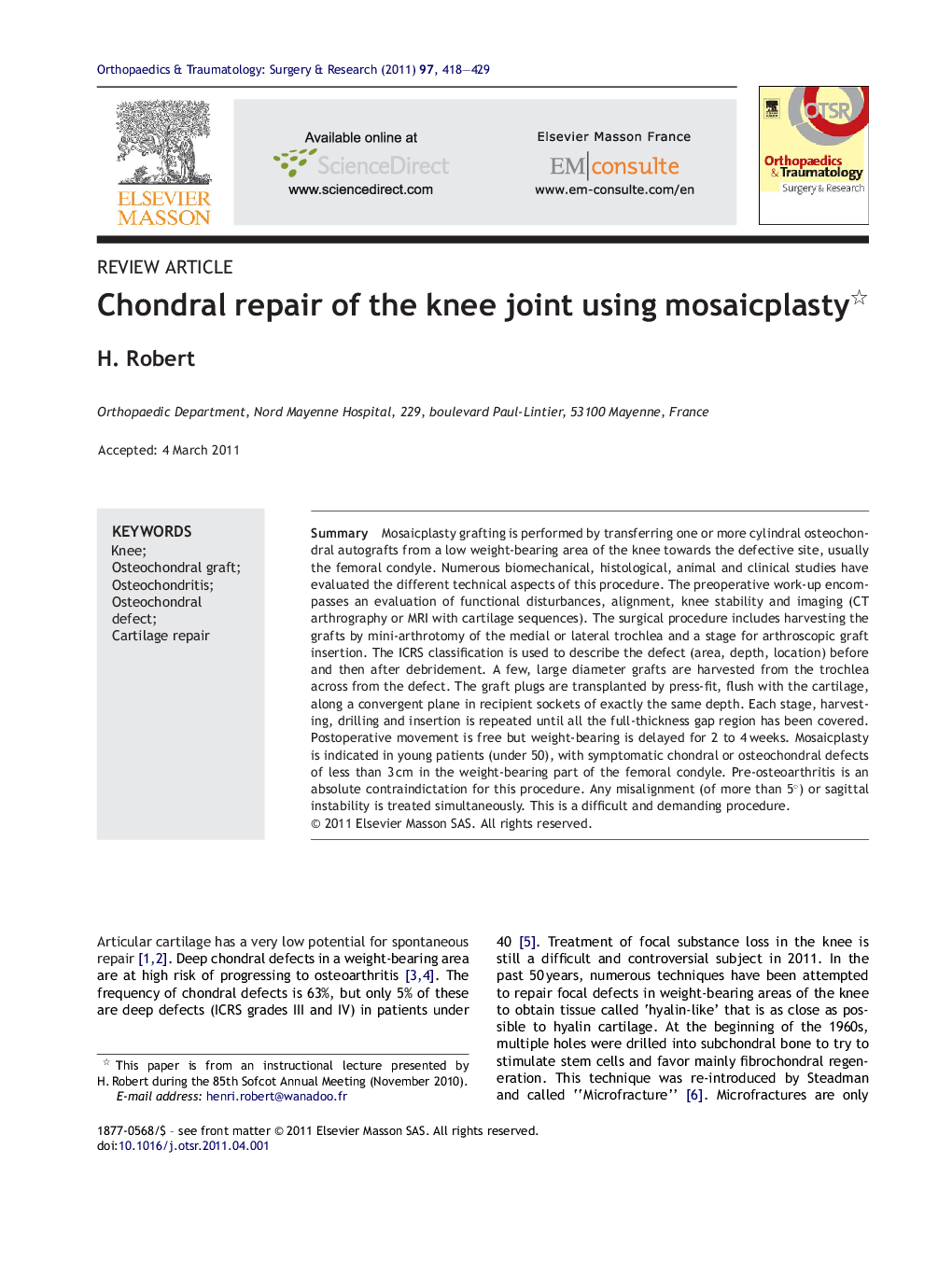| Article ID | Journal | Published Year | Pages | File Type |
|---|---|---|---|---|
| 4082166 | Orthopaedics & Traumatology: Surgery & Research | 2011 | 12 Pages |
SummaryMosaicplasty grafting is performed by transferring one or more cylindral osteochondral autografts from a low weight-bearing area of the knee towards the defective site, usually the femoral condyle. Numerous biomechanical, histological, animal and clinical studies have evaluated the different technical aspects of this procedure. The preoperative work-up encompasses an evaluation of functional disturbances, alignment, knee stability and imaging (CT arthrography or MRI with cartilage sequences). The surgical procedure includes harvesting the grafts by mini-arthrotomy of the medial or lateral trochlea and a stage for arthroscopic graft insertion. The ICRS classification is used to describe the defect (area, depth, location) before and then after debridement. A few, large diameter grafts are harvested from the trochlea across from the defect. The graft plugs are transplanted by press-fit, flush with the cartilage, along a convergent plane in recipient sockets of exactly the same depth. Each stage, harvesting, drilling and insertion is repeated until all the full-thickness gap region has been covered. Postoperative movement is free but weight-bearing is delayed for 2 to 4 weeks. Mosaicplasty is indicated in young patients (under 50), with symptomatic chondral or osteochondral defects of less than 3 cm in the weight-bearing part of the femoral condyle. Pre-osteoarthritis is an absolute contraindictation for this procedure. Any misalignment (of more than 5°) or sagittal instability is treated simultaneously. This is a difficult and demanding procedure.
